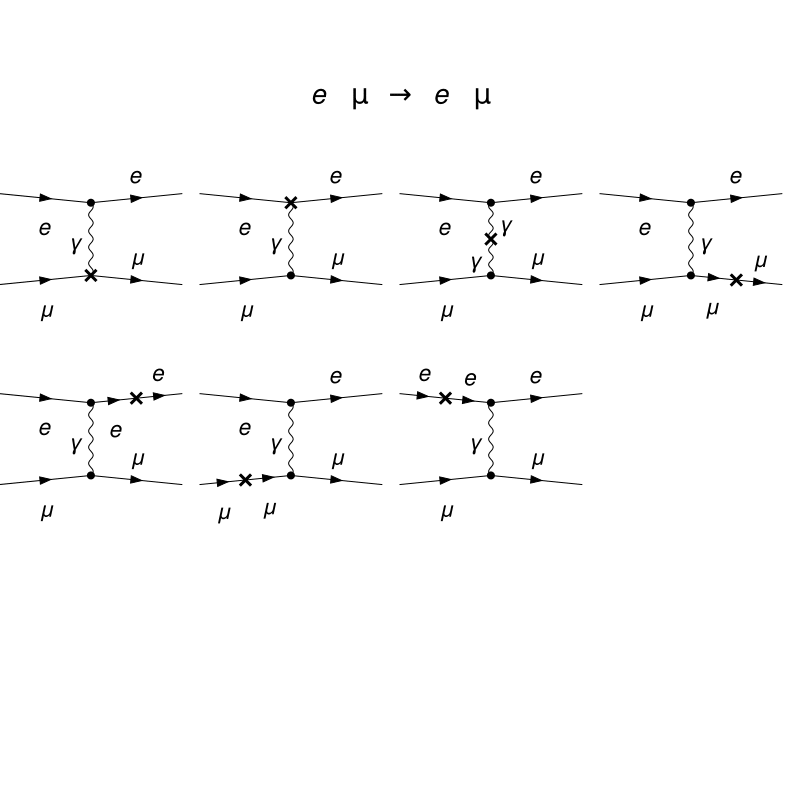In QED, we are taught about the one-loop corrections and the counter-terms to the photon propagator, as well as the one loop corrections and the counter-terms to the fermion propagator. We are also taught about the one-loop correction to the photon-fermion-fermion vertex.
This is all nice and well, but I want to make sure that I understand how to apply these notions to a real interaction. Consider, for instance a $e^-\mu^-\rightarrow e^-\mu^-$ collision. I consider this interaction because one needs only one tree-level diagram in order to write down the Feynman amplitude.
We wish to draw all the diagrams contributing to the Feynman amplitude at the loop-level. According to my understanding, I will modify the tree-level diagram such that my loop-level diagrams include
Four fermion self-energy diagrams: in those diagrams an additional virtual photon will be added on the tree-level diagram, whose (virtual photon's) beginning and end will lie on the same external electron/muon.
Four counter-term diagrams for the fermion propagator
Two vertex diagrams, one for the electron and one for the muon.
Two photon self energy diagrams
Photon self-energy counter-term diagram
Box diagrams: these are obtained by the tree-level diagram by adding one virtual photon that connects (a) the initial electron with the initial muon and (b) the initial electron with the final muon.
So, in total, in the Feynman amplitude I need to consider $4+4+2+2+1+2=15$ diagrams of which I only need to calculate the two vertex diagrams and the two box diagrams, as well as the photon self-energy diagrams and its respective counter term diagram, because the remaining diagrams (electron self-energy) are negated by the respective counter-term diagrams.
Are my considerations correct? Any comment/suggestion will be helful.


